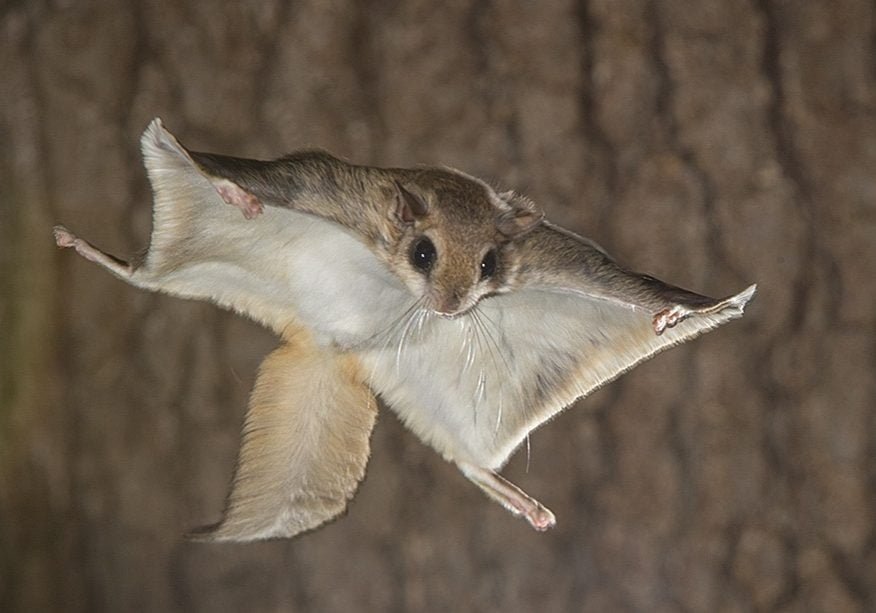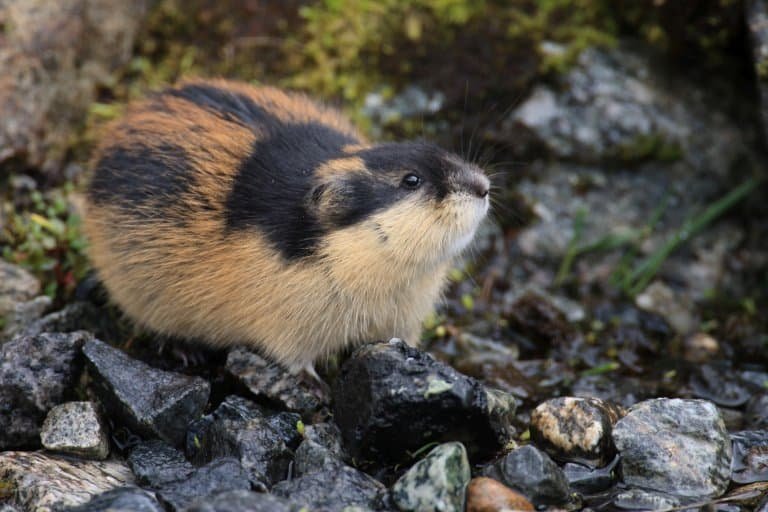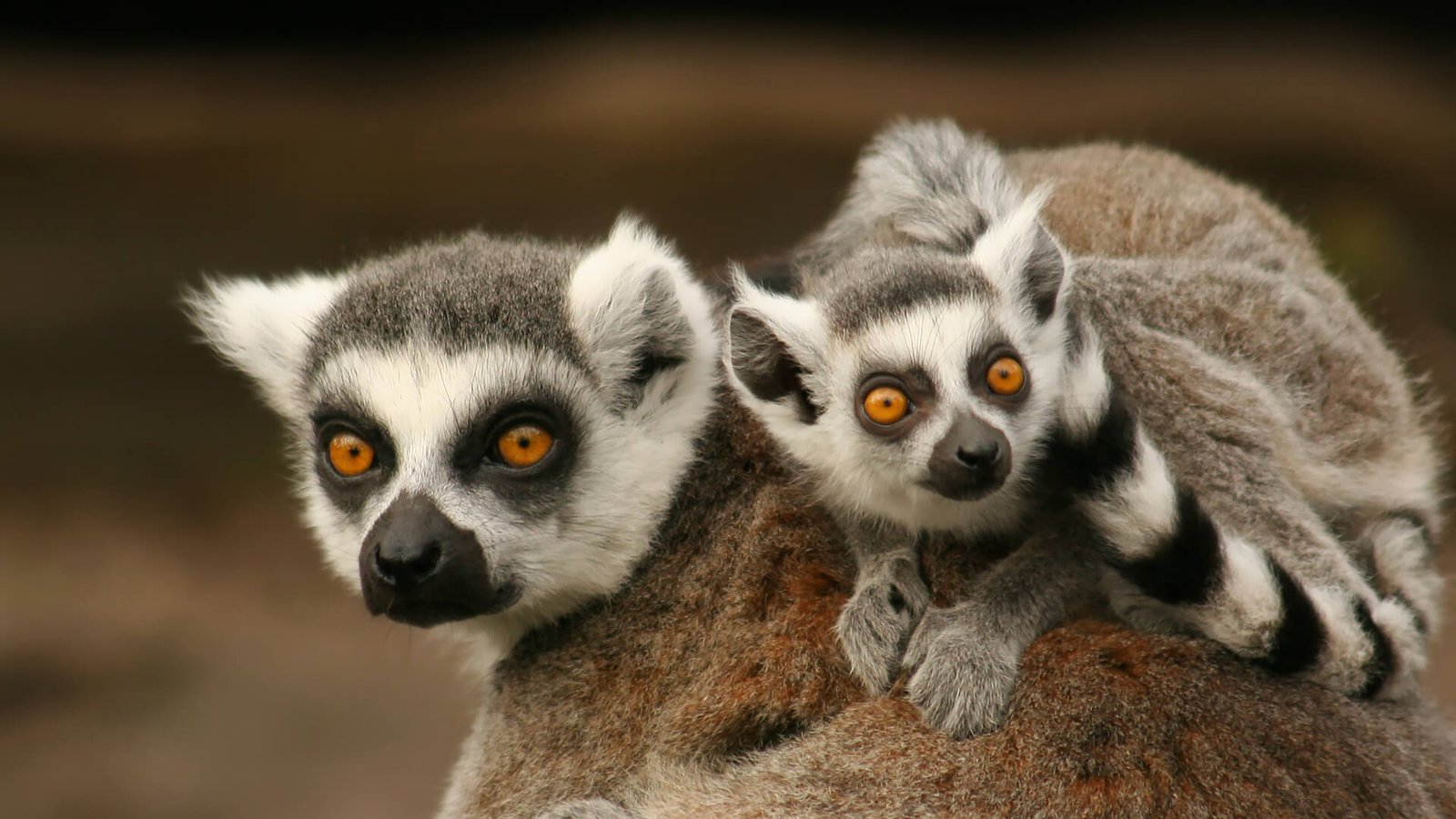Flying squirrel Facts, FAQs, Behaviour, Habitat and Conservation

Flying squirrel Facts | Description | Distribution and Habitat | Conservation | Behaviour and Ecology | Interaction with Human | Cultural | Interesting facts | frequently asked questions about Flying squirrel
Flying squirrels are fascinating creatures that have captured the hearts and minds of nature enthusiasts for generations. These small, nocturnal mammals are known for their unique ability to glide through the air, soaring from tree to tree with effortless grace. With their soft, fluffy fur and large, expressive eyes, they are a delight to watch in the wild. But there’s much more to these tiny creatures than meets the eye. In this article, we’ll explore the world of the flying squirrel, delving into their biology, behavior, and unique adaptations that allow them to take to the skies like no other mammal can. So join us as we embark on a journey into the fascinating world of the flying squirrel!
Taxonomy of Flying squirrel
| Kingdom | Animalia |
|---|---|
| Phylum | Chordata |
| Class | Mammalia |
| Order | Rodentia |
| Family | Sciuridae |
| Subfamily | Sciurinae |
| Genus | Pteromyini |
| Species | Pteromyini (Multiple species, including Pteromys volans, Pteromyscus pulverulentus, and Glaucomys sabrinus) |
Morphology of Flying squirrel
| Characteristic | Description |
|---|---|
| Size | Small, typically 20-30 cm (8-12 in) long |
| Weight | 90-150 grams (3-5.3 oz) |
| Fur | Soft, dense, and usually grey or brown with white underparts |
| Tail | Broad and flattened, acting as a rudder during gliding |
| Patagium | Loose, furry skin between front and hind legs, allowing for gliding |
| Eyes | Large and forward-facing, providing excellent depth perception |
| Teeth | Sharp incisors and molars for gnawing on nuts, seeds, and bark |
| Feet | Adapted for climbing and gripping tree bark, with sharp claws and opposable digits |
| Ears | Small and rounded, often covered by fur |
| Nocturnal Adaptations | Large eyes for night vision, and a keen sense of smell for finding food in the dark |
| Reproductive System | Most species have one or two litters per year, with 2-7 young per litter |

Description of Flying squirrel
The flying squirrel is a small, nocturnal mammal that belongs to the rodent family. As its name suggests, the flying squirrel is capable of gliding through the air using a unique adaptation known as a patagium, which is a furry membrane of skin between its front and hind legs. This patagium allows the squirrel to glide from tree to tree with remarkable precision and control, enabling it to avoid predators and locate food sources in the forest canopy.
Flying squirrels are typically between 20-30 cm (8-12 in) long, with a weight of 90-150 grams (3-5.3 oz). They have soft, dense fur that is usually grey or brown on the back and white on the underparts. Their large, forward-facing eyes provide excellent depth perception, while their keen sense of smell helps them locate food in the dark.
These squirrels are highly adapted to life in the trees. Their feet are designed for climbing and gripping onto bark, with sharp claws and opposable digits that allow them to move effortlessly through the branches. Their tails are broad and flattened, acting as a rudder during gliding and helping to maintain balance in the air.
Flying squirrels are primarily herbivorous, feeding on nuts, seeds, bark, and other plant material. They are known for their sharp incisors and molars, which they use for gnawing and chewing on tough foods. Most species have one or two litters per year, with 2-7 young per litter.
Overall, the flying squirrel is a fascinating and highly adapted creature that has captured the imaginations of nature enthusiasts for generations. Its unique ability to glide through the air with grace and precision makes it a true wonder of the animal kingdom.
Distribution and habitat of Flying squirrel
Flying squirrels are found in many parts of the world, including North America, Europe, and Asia. Within these regions, they are often found in forested areas, where they can easily move through the tree canopy using their gliding abilities.
In North America, there are two species of flying squirrel: the northern flying squirrel (Glaucomys sabrinus) and the southern flying squirrel (Glaucomys volans). The northern species is found throughout much of Canada and the northern United States, while the southern species ranges from the eastern United States to Central America.
In Europe and Asia, there are several different species of flying squirrel, including the Japanese flying squirrel (Pteromys momonga), the Siberian flying squirrel (Pteromys volans), and the Indian giant flying squirrel (Petaurista philippensis). These species are found in a variety of forested habitats, from boreal forests in the north to tropical rainforests in the south.
Flying squirrels are highly adapted to life in the trees, and their habitat requirements reflect this. They are typically found in mature forests with plenty of tall trees, where they can move through the canopy with ease. They prefer areas with a dense understory, which provides cover and protection from predators.
While flying squirrels are primarily arboreal, they do occasionally come down to the ground to forage for food or seek out nesting sites. They are also known to use human-made structures, such as birdhouses or attic spaces, as nesting sites. Overall, the distribution and habitat of flying squirrels are closely tied to forested areas, making them a vital component of many forest ecosystems around the world.
Behaviour and Ecology of Flying squirrel
Flying squirrels are primarily nocturnal, meaning they are most active at night. During the day, they typically rest in tree cavities or other sheltered locations, emerging at dusk to forage for food.
These squirrels are highly social animals and are known to form close bonds with their family members. They communicate with each other using a variety of vocalizations, including chattering, barking, and trilling. They also use scent marking to identify their territory and communicate with other squirrels.
One of the most fascinating aspects of the flying squirrel’s behavior is its gliding ability. These squirrels are capable of gliding for distances of up to 90 meters (295 feet), using their patagium to control their descent and steer their movements in the air. They are able to make sharp turns and land on specific trees or branches with great precision.
Flying squirrels are primarily herbivorous, feeding on nuts, seeds, and other plant material. They are also known to eat insects and other small invertebrates, particularly during the summer months when food is plentiful.
Predation is a constant threat for flying squirrels, and they have evolved a number of adaptations to help them avoid predators. Their nocturnal habits and excellent night vision allow them to move through the forest undetected, while their gliding abilities help them escape danger by quickly moving from tree to tree.
Overall, the behavior and ecology of the flying squirrel are closely tied to its forested habitat. These squirrels are important members of many forest ecosystems around the world, playing a vital role in the food web and helping to distribute seeds and other plant material throughout the forest.
Conservation of Flying squirrel
Flying squirrels are generally considered to be of low conservation concern, with most species being listed as least concern by the International Union for Conservation of Nature (IUCN). However, there are some populations that are threatened by habitat loss, fragmentation, and degradation, as well as other factors such as climate change and introduced predators.
One of the primary threats to flying squirrels is habitat loss and fragmentation. Many species of flying squirrels require large, contiguous areas of forest in order to thrive, and as forests are cleared or broken up by human activities, their populations may become isolated and fragmented. This can make it more difficult for them to find suitable mates and maintain genetic diversity, increasing their vulnerability to disease and other threats.
Other threats to flying squirrels include predation by introduced species such as cats and rats, as well as competition for resources with other species. Climate change may also impact flying squirrel populations by altering their habitats and food sources.
Conservation efforts for flying squirrels generally focus on protecting and restoring their forest habitats, as well as managing other threats such as predation and competition. This may involve measures such as protecting key habitat areas, planting new trees and other vegetation, and controlling invasive species. Additionally, researchers may study the ecology and behavior of flying squirrels to better understand their needs and inform conservation efforts.
Overall, while flying squirrels are not currently considered to be at high risk of extinction, ongoing conservation efforts are important to ensure the long-term survival of these unique and fascinating mammals.
Interaction with Human of Flying squirrel
Flying squirrels have a relatively low level of interaction with humans compared to some other species of mammals. This is due in part to their nocturnal habits and their preference for forested habitats, which may not overlap much with human settlements.
However, there are some ways in which flying squirrels do interact with humans. One of the most common is when they take up residence in human-made structures such as birdhouses or attic spaces. While these squirrels are not generally considered pests, they can cause damage to buildings and may need to be removed if they become a nuisance.
In some cultures, flying squirrels are viewed as a symbol of good luck or good fortune. For example, in Japan, the Japanese flying squirrel is sometimes depicted in art and folklore as a bringer of good luck and prosperity.
Flying squirrels may also be of interest to scientists and wildlife enthusiasts, who study their behavior, ecology, and conservation. By learning more about these fascinating animals, researchers can gain insights into the workings of forest ecosystems and the role that flying squirrels play in them.
Overall, while flying squirrels may not interact with humans as much as some other species of mammals, they are still an important part of our natural world, and efforts to protect and conserve them are important for maintaining healthy and diverse ecosystems.
Cultural and Historical Significance of Flying squirrel
Flying squirrels have had a cultural and historical significance in many parts of the world. In some cultures, they are viewed as symbols of good luck or good fortune, while in others they have been the subject of art and folklore.
One example of this is the Japanese flying squirrel, which has been depicted in traditional Japanese art and folklore as a symbol of good luck and prosperity. The flying squirrel is also the subject of a popular Japanese children’s book series called “Mamebukuro,” which tells the story of a young flying squirrel and his adventures in the forest.
In Native American cultures, flying squirrels were often associated with the spirit world and were believed to have special powers. For example, the Cherokee believed that flying squirrels were messengers of the spirit world and that they could help to guide and protect individuals who were lost or in danger.
In addition to their cultural significance, flying squirrels have also played a role in scientific and historical research. For example, the sugar glider, a type of flying squirrel found in Australia, was first described by European explorers in the 18th century. These explorers were fascinated by the animal’s ability to glide through the air and noted its importance to the indigenous people of the area.
Overall, the cultural and historical significance of flying squirrels is a testament to their unique and fascinating nature. While they may be relatively unknown to many people, their importance in the natural world and their impact on human culture and history should not be underestimated.
Explanatory Notes for Flying squirrel
Explanatory notes for a mammal, such as a flying squirrel, provide additional information and context to help readers understand and appreciate the animal. These notes can include a range of details, from the scientific classification of the species to its behavior and ecology.
Some potential topics that may be covered in explanatory notes for a flying squirrel could include:
- Taxonomy: This could include a detailed breakdown of the species’ scientific classification, including its genus, species, and any subspecies or varieties that are recognized.
- Morphology: Explanatory notes could describe the physical characteristics of the flying squirrel, such as its size, weight, coloration, and anatomical features.
- Distribution and habitat: These notes could provide information on where flying squirrels are found geographically, as well as the types of habitats they prefer and the factors that influence their distribution.
- Behavior and ecology: This could cover topics such as the diet, social structure, mating behavior, and communication methods of flying squirrels, as well as their role in the ecosystem and interactions with other species.
- Conservation: Explanatory notes could discuss the conservation status of flying squirrels, as well as the threats they face and the efforts being made to protect and conserve them.
Overall, explanatory notes for a flying squirrel can provide readers with a deeper understanding and appreciation of this unique and fascinating mammal, helping to foster a greater sense of connection with the natural world.
Interesting facts about Flying squirrel
Here are 10 interesting facts about flying squirrels:
- Flying squirrels don’t actually fly; they glide. They use flaps of skin called patagia that extend between their front and hind legs to glide through the air.
- There are more than 50 species of flying squirrels found around the world, with the largest being the woolly flying squirrel, which can weigh up to 2.2 pounds.
- Flying squirrels are nocturnal animals and are most active at night.
- Unlike other squirrels, flying squirrels are not able to climb down trees headfirst. Instead, they have to turn around and go down tail-first.
- Some species of flying squirrels, such as the Japanese flying squirrel, are able to “fly” up to 300 feet in a single glide.
- Flying squirrels have very soft fur that is often used to make clothing, such as hats and gloves, in some parts of the world.
- Flying squirrels are omnivores and eat a variety of foods, including nuts, seeds, fruits, insects, and even bird eggs.
- Flying squirrels are social animals and often live in groups, which can range in size from just a few individuals to several dozen.
- Flying squirrels have excellent night vision and are able to see in low-light conditions.
- While they are generally not considered pests, flying squirrels can cause damage to buildings and may need to be removed if they take up residence in human-made structures such as attics.
General queries or frequently asked questions about Flying squirrel
What is a flying squirrel?
A flying squirrel is a type of small mammal known for its ability to glide through the air using flaps of skin that extend between its front and hind legs.
Do flying squirrels really fly?
No, flying squirrels do not fly in the traditional sense. Instead, they glide through the air using a combination of muscle power and the skin flaps that extend from their bodies.
How many species of flying squirrels are there?
There are more than 50 different species of flying squirrels found around the world.
What do flying squirrels eat?
Flying squirrels are omnivores and eat a variety of foods, including nuts, seeds, fruits, insects, and even bird eggs.
Where do flying squirrels live?
Flying squirrels are found in many different parts of the world, including North America, Europe, and Asia. They typically live in forests and woodland areas.
Are flying squirrels endangered?
While some species of flying squirrels are listed as threatened or endangered due to habitat loss and other factors, many species are not considered at risk of extinction.
Can flying squirrels be kept as pets?
In most places, it is illegal to keep flying squirrels as pets. Additionally, these animals have very specific care requirements and can be difficult to keep healthy and happy in captivity.
What are the predators of flying squirrels?
Predators of flying squirrels include owls, hawks, snakes, and other animals that are able to climb trees and catch the squirrels in their nests.
How long do flying squirrels live?
The lifespan of a flying squirrel varies depending on the species, but they typically live for 3-6 years in the wild.
Do flying squirrels hibernate?
Many species of flying squirrels do not hibernate, but they do become less active during the winter months and may spend more time in their nests to conserve energy.
Conclusion
In conclusion, flying squirrels are fascinating small mammals known for their ability to glide through the air using flaps of skin. There are over 50 species of flying squirrels found around the world, and they have a diverse range of habitats and diets. These animals are social and nocturnal, and while they are not generally considered pests, they can cause damage to buildings if they take up residence in human-made structures.
Conservation efforts for flying squirrels are important in areas where habitat loss and other factors are affecting their populations. In addition, education about these animals can help people appreciate their unique adaptations and behaviors. Flying squirrels have played a role in human cultures and history, with some species being used for their soft fur or considered important spiritual symbols.
Overall, flying squirrels are an important and interesting part of the natural world, and continued research and conservation efforts can help ensure their survival for generations to come.












